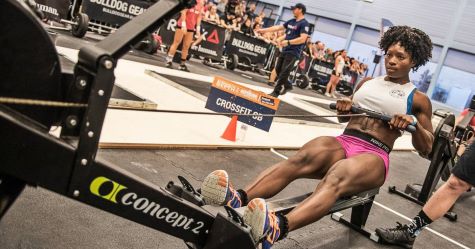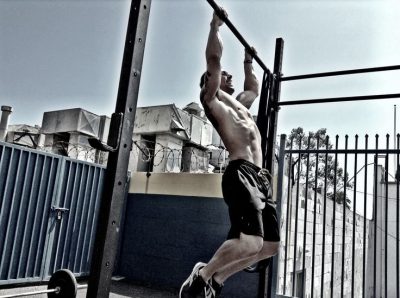In this article, we are going to tell you everything you need to know about HIIT cardio.
Not only that, we are going to show you the research to back it up.
Let’s get started.

What is HIIT Cardio
HIIT stands for High-Intensity Interval Training. This is a form of cardio where you perform an intense exercise like sprints for a short period of time, usually 15-60 seconds followed by a rest or active recovery period. Rest/active recovery periods are usually 30-120 seconds but can be longer depending on the exercise and then you perform the intense exercise again and repeat.
This can be done for just a few rounds to as many as 15 rounds. The number of rounds depends on what exercise you are performing and what kind of shape you are in. If you are just starting out you should only do a few rounds then build up as you get better conditioned.
And when we say sprint we don’t mean “just kinda go hard”. For the HIIT to work properly you should be going between 90-100% maximum effort. Over the years somehow the high-intensity part has become lost among many the trainers and people who perform HIIT.
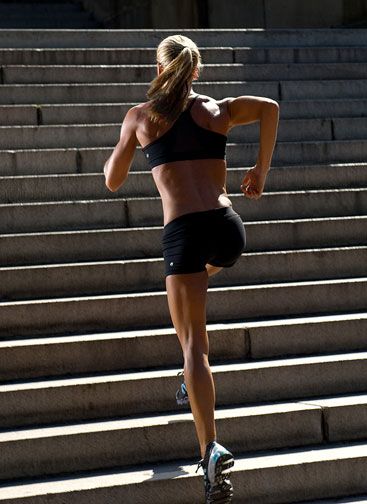
Related: 5 HIIT Sprint Workouts That Blast Fat
What are the benefits of HIIT Cardio?
There are several benefits to HIIT cardio, the first is that it takes much less time than doing regular steady-state cardio for 50 minutes. It is also much less boring.
The main benefit of HIIT is that it also burns much more fat than steady-state cardio does in much less time. It is also ideal for those looking to keep and build muscle while losing fat.
Another lesser-known benefit is that HIIT also boosts your endurance. We don’t just mean your sprinting endurance either, it actually boosts your long-distance endurance as well.
The Research That Backs up HIIT
Just in case you thought we were totally lying about the benefits HIIT provides, we figured we would give you some research to back us up.
One of my favorite studies is this 12-week study done by McMaster University, Hamilton, ON, Canada. The study had 27 sedentary men broken up into 3 groups, one did interval sprint training, one did steady-state cardio and one did not train at all. At the end of the 12-week study, the group doing the interval sprint training lost more body fat than the steady-state cardio group and more than the control group.
Here’s where it gets crazy…
You are probably thinking they had to do a lot of sprints to lose more body fat than the steady-state group, you would be so very wrong.
In fact, the sprint group only did 1 minute total of sprint work. Their workout involved 3×20-second all-out’ cycle sprints with 2 minutes of moderate cycling between sprints. Meanwhile, the steady-state group did 45 minutes of continuous cycling at 70% maximal heart rate. Both groups also performed a 2-minute warm-up and 3-minute cool-down at 50W. Both groups performed 3 workouts per week.
That is insane! Just 3-20 second sprints burned more fat than 50 minutes of continuous pedaling?! Just imagine how much more fat they could have burned had they done 6 sprints or more which they easily could have. Talk about getting a serious bang for your buck.
Not convinced yet? Check out this review in the British Journal of Medicine where they looked at 36 different studies involving HIIT compared to moderate-intensity continues training. The review conclusion states that “Interval training provided 28.5% greater reductions in total absolute fat mass (kg) than MOD (moderate intensity continues training).
Research that shows HIIT builds endurance too
This study was done by the Department of Physical Education and Sport Sciences at the University of Limerick in Limerick, Ireland. The 8-week study compared the effects of long-distance training vs HIIT in rowers using 19 well-trained rowing participants.
Participants were randomly assigned to each group. The long-distance group did 10 weekly aerobic sessions while the HIIT group also performed 10 weekly sessions, 8 were aerobic and 2 were HIIT using 2.5-minute interval training.
The final conclusion of the study was that “Eight weeks of HIIT performed at 100% PPO (peak power output) is more effective than LSD (long slow distance training) in improving performance and aerobic characteristics in well-trained rowers”.
Bottom line…
HIIT is proven to burn more fat and also improve endurance.
HIIT lowers blood sugar
Ok, one last thing here before I literally bore you to tears with research but this is another good one.
I am not going to bore you with the details on this one but here is the study, check it out and get your nerd on. (Hint: HIIT was shown to lower blood sugar levels)
Enough with the studies, let’s move on.
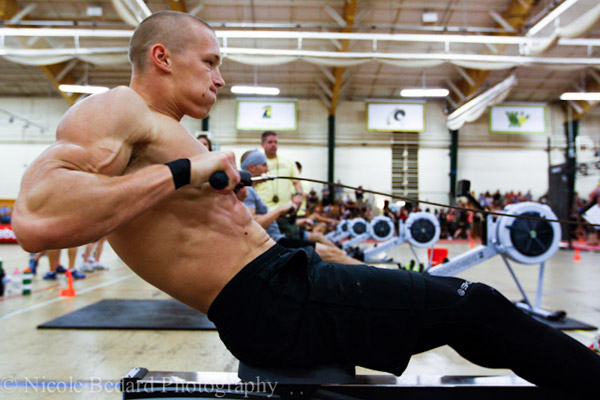
Diet with HIIT
No, I am not going to give you some HIIT diet plan here or anything, that would be a bit ridiculous. Plus there is no such thing so there’s that.
I do want to mention that if you are trying to lose weight or get ripped by using HIIT you should most definitely keep your diet in check though.
You will be wasting your time and energy if you think you are going to go to the track and do some 20-minute HIIT workout then go out and chow down 5 pieces of pizza and a dozen wings and that somehow you will still get ripped. I wish it were that easy.
If you want some sort of eating guidelines you can check out our articles 5 Nutrition Rules for Healthy Living or Eating for Ripped Abs.
The saying “abs are made in the kitchen” is true. Whether you are trying to lose weight or get ripped your diet needs to be on point or you can do HIIT until the cows come home and it isn’t going to make a difference.
How often to do HIIT?
While HIIT is very effective at burning fat and improving your endurance you don’t want to be doing it 5 days a week. Your body needs recovery time and you will burn yourself out if you do it too often.
Two or maybe three times a week is about the most you would want to do HIIT and you definitely want to take a day off in between your HIIT training days.
If you are a beginner I would start off with just one HIIT session a week then move up to 2 as you get into better shape. If you really want to get hardcore you can go to three sessions once you are in good shape a week but I think 2 per week is plenty for most people.
HIIT vs Steady State Cardio
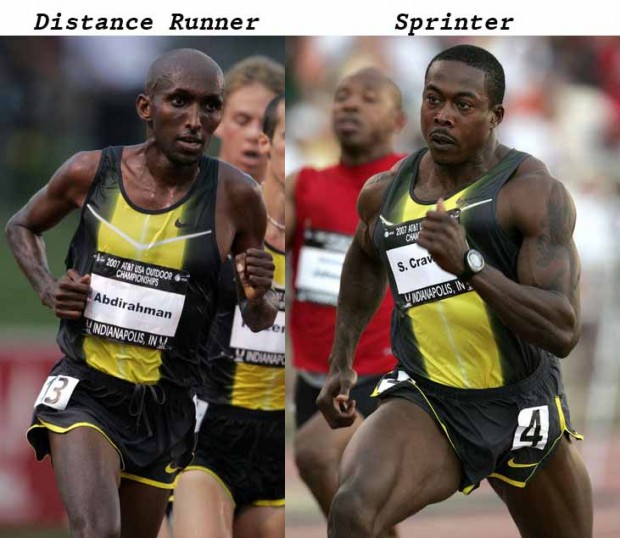
When comparing HIIT and steady-state cardio it all depends on what your goals are.
If your goals are to burn more fat in less time then HIIT is the obvious choice as we have already discussed. HIIT will also help you preserve and even build muscle too. Think of it this way, have you ever looked at a long-distance runner’s body compared to a sprinter’s body? Sprinters are strong and muscled, long-distance runners are slight and some are almost frail. This is at least partly due to the training they do and the effect it has on the body.
Steady-state cardio isn’t without its advantages though. Steady-state cardio is less stressful on your heart and body and while some folks find it boring other people find steady-state cardio to be more enjoyable.
Also, while it has been shown that HIIT improves your endurance you aren’t going to want to just do HIIT training to get ready to run a 10k. While HIIT should be a part of your endurance training steady-state cardio is still the way to go for the majority of your training.
Best Exercises For HIIT
In my opinion, some of these HIIT workouts you see online have gotten a bit out of hand. I have seen “HIIT routines” with people doing things like jumping jacks and sit-ups. It seems like a lot of people have forgotten about the High-Intensity part of HIIT. Sorry, if you are really wanting to burn fat jumping jacks and sit-ups etc are not really going to cut the mustard.
In my opinion, there are 3 tiers of exercises you can do for HIIT training. You want to stick with the top tier mostly and use the second tier on occasion
The top tier HIIT exercises
- Sprints – On a track or treadmill these work great
- Cycling – On an exercises bike or your own bike rolling down the road, you can’t go wrong
- Rowing machine – This is a good full-body HIIT exercise
- Stairclimber – Notice I said stair climber with the actual stairs, not that lame Stairmaster thing. I have had great results on a stair climber
- Stadiums – Running up the stairs at your local high school stadium is another fantastic option
If you are looking to burn and get in shape the above exercises will give you the best bang for your buck.
Second Tier HIIT Exercises
- Kettlebell swings – I’ve done kettlebell HIIT workouts in the past and they just don’t seem to have the same intensity as a top tier exercise
- Burpees – While burpees are a great exercise they just don’t seem to work all that well with HIIT
- Jump rope – Another great exercise but it’s not quite as intense as the top tier exercises
- Mountain climbers – These are almost good enough to be in tier 1
- Jogging in place with high knees – Not easy, maybe the best option in the 2nd tier along with mountain climbers
The above exercises will also work, they don’t work as well in my experience and are not the same intensity as the top tier exercises but they can be good for a change of pace.
Third Tier HIIT Exercises
- Jumping jacks
- Sit-up
- Push-ups
- Any other exercise
Frankly, I don’t see much difference between doing push-ups HIIT style and just doing sets of push-ups. Those are pretty close to the same thing. Third-tier exercises are for people who can’t do the first or second-tier ones. Start there if you need to and work your way up to the top 2 tiers.
The Negatives of HIIT
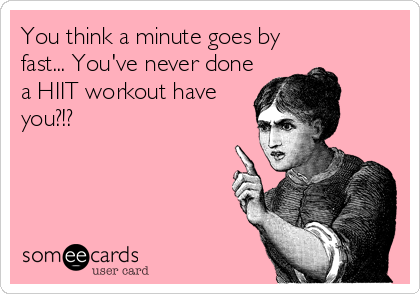
HIIT is great for fat loss but it’s not all rainbow butterflies and puppy dog kisses, there are some negatives as well.
- First off, its hard work. Not everyone feels like doing sprints as part of their workout especially once you get above the age of 30. Sprints are pretty demanding and are not really everyone’s cup of tea.
- They also aren’t really for beginners. Going from being a couch potato to doing intense interval training can be a big step to take. Beginners should start with steady-state cardio and work their way up to HIIT as they get into better shape.
- There is also a greater risk of injury when doing intense exercise particularly if your body isn’t accustomed to it.
- HIIT can also lead to overtraining and burnout if done too often.
Best machines to use for HIIT Cardio
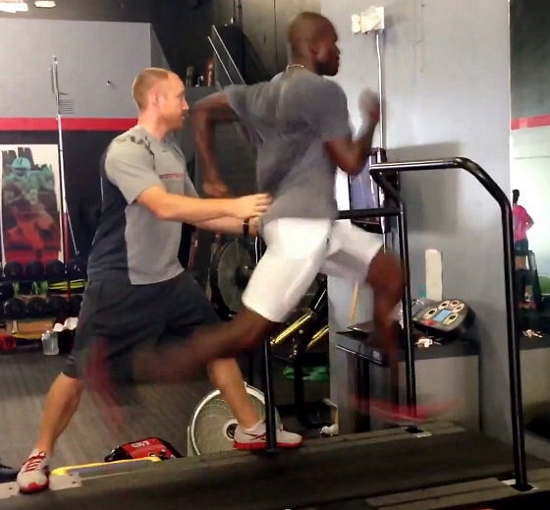
Some machines are better than others when it comes to HIIT. Here is what we like:
Treadmill – If you can find one with a good HIIT program on it you are golden. Otherwise, you are stuck trying to push buttons and adjust speed while sprinting and that can be a real pain.
Stairclimber – I have had really good luck with these, the ones at my gym have the perfect HIIT program on them. 45 seconds of high speed followed by 60 seconds of low speed and it is fully adjustable. Yours may or may not have something similar but if not it’s much easier to adjust the speed manually while climbing stairs fast than it is while sprinting on a treadmill.
Exercise Bike – This is definitely one of the easiest machines to do HIIT on. Easy start and easy stop. You don’t even need a build-in program, it would be easy enough to do manually just using a timer.
Rowing Machine – Probably the easiest machine to HIIT on, all you need is a timer.
Elliptical machine – The ideal machine for beginners.
HIIT Workouts
Ok, let’s get down to some actual HIIT workouts now.
I recommend a good 5-10-minute warm-up. Walk or jog at a very slow pace to encourage blood flow to your muscles and get your body ready for higher intensity activity. Also, perform a cool down after your workout is finished.
- Sprint for 30 seconds. The rest interval is 1 minute and 15 seconds. Continue this process until you have finished 10 reps.
- Tabata – Sprint for 20 seconds then rest for 10 seconds, keep repeating until you have done this for 4 minutes
- Sprint for 60 seconds then rest for 2 minutes and 30 seconds. Repeat until you have completed 6 reps
- Sprint for 30 seconds then rest for 30 seconds. Continue for 10 minutes
- Sprint 20 seconds then rest 2 minutes. Repeat for 8 repetitions
- Sprint 60 seconds then rest 3 minutes. Repeat for 6 repetitions
- On a track, sprint the straightaways and walk the curves, go for 2-5 laps around the track – This workout is for running only, obviously
Related: 8 Tabata Workouts That Burn Fat Like Crazy
The Ultimate HIIT Workout
The ultimate HIIT workout would be uphill sprints. The steeper the hill the better.
Below is a picture of the hill I use for HIIT sprints. I’m not sure if the picture does it justice but it’s big and steep. There also usually aren’t a bunch of kids rolling pumpkins down it, that would make for added excitement dodging them though.
For my workouts, I sprint up the hill which takes about 15-20 seconds, then walk back down the hill which is about 1 minute and 15 seconds. I repeat that about 6 times or so. By the time I am done, I am pretty much hating life but it’s a great workout. You can also do these on a treadmill that has a good incline, they work great but they are not fun, they also definitely aren’t for beginners.

Conclusion
There is all of the information to help you understand what HIIT is, the advantages and the research to back it up.
Plan to do HIIT just 1-2 times per week on non-consecutive days, at least in the beginning. Allow your muscles to rest at least 48 hours between sessions so they can repair and get stronger. As you become stronger, add in a third session per week if you desire. Also, don’t forget your warm-up and cool down, HIIT isn’t something you just want to jump right into without a proper warm-up.

Ryan is a former college wrestler and lifelong fitness fanatic with over 25 years in the industry. He’s run half marathons, tackled mud runs, placed in body transformation contests, and coached everything from wrestling to girls’ soccer.
Along the way, he’s tested hundreds of supplements and built a deep well of supplement knowledge. His work has appeared in Muscle & Strength, Testosterone Junkie, The Sport Review, and more. Today, he’s the editor-in-chief of this site, still training hard and helping others reach their goals. Connect with him on LinkedIn below.

